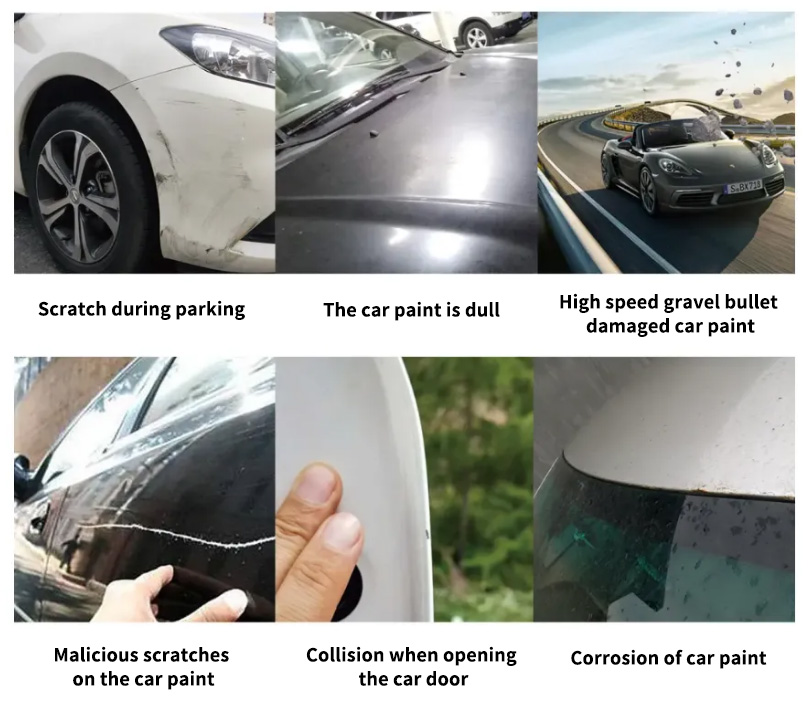Motec Paint Protection Film(PPF)
How do beginners choose their first Paint Protection Film (PPF)? What should we pay attention to when choosing PPF?
Do I have to apply PPF to my car?
Some car owners may wonder if it is necessary to label their cars with PPF? The answer is not necessarily.
Just as some people like to film and cover their phones, while others pursue the feel of a bare phone. Different needs lead to different choices.
Applying PPF is like applying a film or covering, on one hand to protect the car paint from damage, and on the other hand to brighten the car paint and enhance its texture.
Applying PPF can prevent the following problems in advance.

Which material is better for PPF?
PPF comes in materials such as PVC, TPH, TPU, etc. Currently, the best substrate is aliphatic TPU
TPU substrate is not only wear-resistant and scratch resistant, but also resistant to yellowing and oxidation, greatly delaying the oxidation and fading of car paint. It has a long service life and is not easy to leave glue when peeled off.
TPU actually has different family members. Simply put, TPU, as a polymer material, consists of two parts: a hard segment and a soft segment.
According to the structural characteristics of the hard segment:
TPU is divided into Aliphatic TPU and Aromatic TPU
According to the structural characteristics of the soft segment:
TPU is divided into Polyester TPU, Polyether TPU, and Polycaprolactone TPU
As the main raw material for PPF, the quality of TPU material directly determines the quality of PPF. Today, let's learn about the differences in characteristics among the members of the TPU family.
Aliphatic TPU vs Aromatic TPU
The aliphatic segments in aliphatic TPU endow it with significant advantages in terms of yellowing resistance and weather resistance. PPF made from aliphatic TPU can maintain its original transparency and color for a longer period of time, and is less prone to yellowing due to UV irradiation.
In contrast, although aromatic TPU has good performance in certain aspects, its resistance to yellowing and weather resistance is relatively weak. This type of PPF may experience color changes in a short period of time, affecting its appearance.
Yellowing inferior PPF ↓
Polyester TPU: It does not perform well in terms of weather resistance and hydrolysis resistance. Long term exposure to ultraviolet light and moisture can cause polyester TPU to turn yellow and degrade.
Polyether TPU: It has improved hydrolysis resistance and can resist moisture erosion to a certain extent. However, there are still limitations in terms of yellowing resistance.
Polycarbonate TPU: As a leader among aliphatic TPU, it stands out for its excellent weather resistance, yellowing resistance, and chemical resistance. Even under extreme weather conditions, PPF can maintain its transparency and color, and is less prone to yellowing and aging. It is the best choice for car owners.
In addition, the following issues should be noted.
1. As the saying goes, "Three parts of the film, seven parts of the paste". In addition to choosing the right film, the construction level and professionalism of the film sticking master are also important. The most basic performance is to ensure a tight fit and meet the acceptance standards.
2. Be sure to choose a brand with after-sales guarantee, official electronic warranty, and worry free after-sales service.


